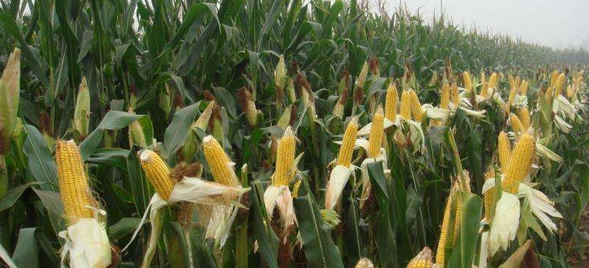Grain and forage corn refers to corn that can harvest corn kernels at maturity and green feed with straw. It can not only improve the comprehensive utilization rate of corn, but also stabilize the development from the actual situation of corn demand in the current market. I. Development prospects 1. Corn production cycle is short, quick effect, high efficiency, corn can be harvested generally 90 to 130 days. For example, the output per 667 square meters is 500 kilograms, 1.47 yuan per kilogram, and the net income is about 400 yuan. Planting corn is simple and mechanized, greatly reducing labor intensity. 2. Planting feed corn can turn corn stalk into waste and increase economic benefits. Second, it can eliminate the phenomenon of farmers burning straw and purify the environment. Third, it can meet the needs of animal husbandry for corn, achieve self-sufficiency, and promote biogas project. Implementation, improve the economic benefits of agriculture; Fourth, it can be restricted by the external environment such as processing enterprises and market regulation, ensuring stable development. Second, the characteristics of the variety 1. Xinyu No.10 is a special early-maturing variety, with high yield and stability, high quality and strong resistance. The production period of spring planting in northern Xinjiang is 100 days, summer is 85-95 days, 667 square meters is 500-600 kilograms, and high yield can reach 830. Kilogram, crude protein content 11.82%, lysine content 0.417%, plant height 220 cm, ear length 18 cm, small dentate type, grain yellow, 1000-grain weight 280 g. The seeding density is 5,000 to 5,500 plants/667 square meters. 2. Xinyu No. 20 belongs to the middle and late varieties, with high yield, stable yield, high quality and good resistance to stress. The general output is 850-1000 kg/667 square meters. The whole plant biological output is 4500-5000 kg / 667 square meters. Spring production period in northern Xinjiang is 120 days, crude protein content is 11.92%, crude starch is 74.49%, plant height is 290 cm, ear length is 20 cm, grain is yellow, half dentate, 1000-grain weight is 320 g, suitable density is 4500-5000/667 square Rice, compact plant type, resistant to dense planting, good greenness, high biological yield, suitable for silage. 3. Xinqing No.1 belongs to high-quality tiller and multi-ear silage corn, which has high yield, high quality, strong resistance and adaptability. The general output is 4000-6000 kg/667 square meters. The yield of both positive and re-broadcasting can reach 10,000 kg or more. Northern Xinjiang spring sowing 110 to 120 days, plant height is 270 cm, the whole plant is divided into 5 to 8 and more than 10. Each plant has 5 to 8 earings, a good fertility planting density of 60×40 cm, and a poor fertility of 60×(25-30 cm). It is harvested in the early stage of seed ripening. 4. Xinyu No.29, Xinyu No.13, Shendan No.16, Jindan No.42, etc. can be promoted. Third, cultivation points Variety selection For grain and forage corn, the varieties should be selected after the plants are mature, with high green starch, soluble carbohydrate and protein content, high cellulose, adapt to local ecological conditions and strong resistance. 2. Timely early broadcast When the temperature of the surface of the 5 cm soil layer is stable for more than 10 days, the sowing date is in the end of April. The sowing method is the same as that of ordinary corn, and the seeding amount is 2.5 to 3 kg/667 square meters. 3. Reasonable close planting If the soil fertility is high, 4,500 seedlings per 667 square meters; if the soil fertility is low, 5,000 seedlings per 667 square meters. 4. Balanced fertilization Nitrogen, phosphorus and potassium are applied together, 667 square meters of agricultural fertilizer 1000 kg, diammonium 30 kg for base fertilizer, and urea for 20 to 30 kg at jointing stage. Fertilization principle: heavy application of base fertilizer, jointing fertilizer, supplementation of panicle fertilizer, addition of micro-fertilizer. Jointing fertilizer (when the 7th leaf is unfolded) is digging and digging at a distance of 10 cm from the young plant. If there is de-fermentation in the later stage, the fertilization period should be appropriate in advance, and the amount of fertilization can be appropriately increased. When the plant has symptoms of lack of fertilizer, the micro-fertilizer is applied. 5. Water saving irrigation When there is a lack of water until the leaves are wilting and curling, and they still cannot recover by themselves in the evening, they should be irrigated in time. Ensure the emergence of water, skillfully instill water and water, and fill the water for pumping. When planting, the water content of the plough layer is not less than 16%, the jointing period is not less than 17%, the flowering period is not less than 18%, and the ripening period is not Less than 17%, promote U-channel drainage or low-pressure concealed pipe, hose water delivery, water-saving irrigation with small suction and even irrigation. 6. Disease prevention Ordinary corn field anti-corn mites generally use carbofuran in the big bell mouth period, but the carbofuran residual period is too long, the drug particles remain in the corn plant body, can not be decomposed and absorbed, livestock is not suitable for consumption. The grain-feeding and corn use banned highly toxic or long-lasting pesticides to achieve pollution-free production. Use corn mash in the corn 10 leaf stage every 667 square meters using BT emulsion 200 ~ 300 ml with water diluted 100 times liquid heart. Effectively prevent corn mash and achieve pollution-free production. 7. Timely harvest During the growth period, weeding and weeding in time, weeding in the 4th leaf stage, and harvesting best at the end of the milk to the waxy stage. Maitake Mushroom Extract;edible mushroom extract Shaanxi Zhongyi Kangjian Biotechnology Co.,Ltd , https://www.zhongyibiology.com
Grain and forage maize varieties and cultivation points